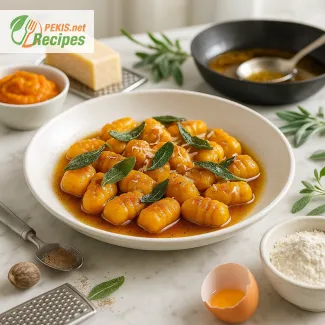
Risotto with seafood, or Risotto ai frutti di mare, is one of Italy’s celebrated dishes, embodying both the richness of the sea and the luxurious, creamy texture of traditional risotto. Originating from the coastal regions of Italy, where fresh seafood is abundant, this dish has become a staple across the country and a sought-after experience worldwide. With risotto with seafood, Italian cuisine delivers an artful balance of flavors, textures, and aromas that harmonize beautifully in every spoonful, reflecting the freshness of the sea with the comfort of perfectly cooked risotto rice.
Usage and Purpose of Seafood Risotto
Risotto with seafood is more than just a dish; it's an experience that brings diners closer to the soul of Italian coastal living. In Italy, it’s enjoyed as a primo piatto (first course), often followed by a lighter main dish, especially during gatherings and celebrations where seafood is revered. The dish, with its vibrant colors and oceanic aroma, evokes the Italian seaside, making it a popular choice for warm-weather dining or festive occasions. Because of its luxurious, creamy texture and the freshness of the seafood, it’s often considered an indulgence—a meal to be savored slowly with good company and fine wine.
Seafood risotto’s versatility also allows it to pair seamlessly with various seafood combinations and even distinct flavor profiles. It is suitable for formal dinners as well as casual gatherings, and its complexity in taste and presentation makes it an ideal option for those looking to impress their guests with authentic Italian flavors. Risotto with seafood can serve as a standalone feature in a meal or be complemented by light salads, crisp white wines, or even a sparkling Prosecco to balance its richness.
Types of Seafood Risotto
1. Classic Mixed Seafood Risotto
The classic mixed seafood risotto includes a variety of seafood like shrimp, mussels, clams, and sometimes calamari. This version is richly layered, allowing the subtle differences in taste and texture of each seafood to add depth to the dish. The ingredients are typically chosen for their ability to create a harmonious seafood flavor while providing a range of textures—from the tenderness of shrimp to the delicate chewiness of calamari. The seafood is cooked carefully to retain its natural juices, enhancing the risotto’s creaminess and infusing the rice with an irresistible, briny essence.
2. Shrimp Risotto (Risotto ai Gamberi)
In Risotto ai Gamberi, shrimp takes center stage. This type of seafood risotto is elegant and slightly sweet, as the shrimp lend a subtle sweetness that enhances the savory creaminess of the risotto. The shrimp are typically seared or lightly sautéed and then added near the end of cooking, ensuring they remain tender and juicy. The natural flavors of shrimp pair excellently with a splash of white wine and a touch of garlic, creating a balanced yet distinctive taste profile that is simple yet refined.
3. Squid Ink Seafood Risotto
For a more adventurous take, Squid Ink Risotto offers a bold, dark appearance and an intense flavor that makes a striking presentation. Made with the addition of nero di seppia (squid ink), this variation on seafood risotto has a unique, slightly salty taste with a hint of the ocean’s natural minerality. The squid ink deepens the dish’s umami flavors, while seafood like tender calamari rings and clams are often added to complement the risotto’s black hue. It’s a dramatic dish, typically found in coastal regions, and appreciated for its daring flavor and unforgettable look.
4. Scallop Risotto
Another refined option is Risotto ai Capesante, or risotto with scallops. This luxurious version emphasizes the delicacy of scallops, which are often seared to golden perfection before being placed atop the risotto. The mild, slightly sweet flavor of scallops melds beautifully with the creamy texture of the risotto, creating a dish that feels indulgent without overwhelming the palate. This type of seafood risotto is often finished with a light drizzle of lemon-infused olive oil or a sprinkle of fresh herbs to elevate the natural taste of the scallops.
5. Lobster Risotto
Lobster risotto, or Risotto all'Astice, is a premium variation typically reserved for special occasions. The lobster’s meat, known for its sweetness and tender texture, complements the risotto’s creaminess. Often, the lobster shell is used to make a rich stock, infusing the dish with additional depth and intensity. The lobster risotto is a luxurious and visually striking dish that is often garnished with a few whole lobster pieces for an elegant presentation, making it a favorite for celebratory meals.
6. Risotto with Mussels and Clams
This variation focuses on bivalves, where mussels and clams are the stars. These shellfish add a burst of briny flavor to the dish and are often cooked just until they open, releasing their juices into the risotto. The result is a delicately flavored risotto that captures the essence of the sea in every bite. Mussels and clams are frequently accompanied by herbs like parsley and a touch of lemon zest to add freshness and lighten the dish.
Ingredients and Essential Techniques
To make seafood risotto, high-quality ingredients and careful technique are essential. Traditional risotto rice varieties like Arborio, Carnaroli, or Vialone Nano are indispensable for achieving the desired creamy texture. These short-grain rices are particularly starchy, creating a naturally creamy consistency that distinguishes risotto from other rice dishes.
The foundation of flavor in a seafood risotto often begins with a soffritto of onion, garlic, and sometimes shallots, sautéed in olive oil or butter. Once the rice is added, it’s toasted lightly to bring out its nutty aroma before a splash of white wine deglazes the pan, adding acidity and balancing the richness of the seafood. Gradually adding a rich seafood stock—ideally made with shells, heads, and scraps of the seafood being used—infuses the rice with a deep, briny flavor that complements the seafood perfectly.
Serving and Presentation Tips
Risotto with seafood is best served freshly made, as its creamy consistency is at its peak immediately after cooking. Traditionally, it’s presented simply, often garnished with fresh parsley or a wedge of lemon to bring brightness to the dish. For an extra touch, a drizzle of quality olive oil or a light sprinkling of red pepper flakes can add complexity. In fine dining settings, seafood risottos may be garnished with whole shellfish, such as a jumbo shrimp or a mussel in its shell, giving the dish an elegant and impressive appearance.
A Unique Culinary Experience
Ultimately, seafood risotto encapsulates Italian culinary principles: simplicity, quality ingredients, and a focus on bringing out the natural flavors of each element. Whether it’s the traditional mixed seafood risotto or the dramatic squid ink variation, each type brings something unique to the table, offering a taste of Italy’s coastal heritage and an unforgettable culinary experience. The dish’s luxurious texture, complemented by the fresh flavors of the sea, continues to captivate the palates of food lovers worldwide, making seafood risotto a true Italian masterpiece.
- Prepare the Base:
- In a large pan, heat the olive oil and butter over medium heat. Add the chopped onion and cook, stirring frequently, until it becomes translucent and soft (about 5 minutes).
- Add the minced garlic and continue cooking for another minute, ensuring the garlic doesn’t brown, as this could cause bitterness.
- Toast the Rice:
- Add the Arborio rice to the pan, stirring continuously to coat it with the oil and butter. Toast the rice for 2-3 minutes, allowing the grains to become slightly translucent around the edges. This step enhances the rice’s flavor and helps it absorb the broth better.
- Deglaze with Wine:
- Pour in the dry white wine and stir well. Allow the wine to simmer and reduce until mostly absorbed by the rice, which will enhance the risotto’s depth of flavor.
- Gradually Add the Stock:
- Reduce the heat to medium-low and begin adding the seafood stock (or fish broth) one ladle at a time, stirring frequently. Wait until the liquid is mostly absorbed before adding more stock. Continue this process for about 18-20 minutes, or until the rice is creamy and cooked through but still al dente.
- Cook the Seafood:
- When the rice is about 5 minutes from being done, add the shrimp, mussels, and squid rings directly to the risotto. Stir gently to incorporate. As the seafood cooks, it will release flavors into the risotto, enriching its taste. Cook until the shrimp turn pink, and the mussels open (discard any that do not open).
- Finish and Season:
- Remove the pan from heat and add the chopped parsley, lemon zest, and a squeeze of lemon juice. Season to taste with salt and black pepper.
- Let the risotto rest for a minute before serving; this helps it achieve the perfect creamy consistency.
- Serve:
- Serve the risotto hot, garnished with additional fresh parsley and a light drizzle of olive oil if desired.
This Risotto with Seafood offers a taste of the Italian coast in every bite, making it a luxurious yet comforting meal perfect for any occasion!
Nutritional Impact of Seafood Risotto and How It Supports Health
Seafood risotto is a nutritionally rich dish, combining high-quality carbohydrates, lean proteins, essential fats, and micronutrients, making it an excellent source of energy and nourishment. Each ingredient brings unique health benefits, contributing to overall well-being when enjoyed as part of a balanced diet.
1. Carbohydrates from Arborio Rice
Arborio rice provides the primary carbohydrate source in seafood risotto, offering approximately 54 grams of carbohydrates per serving. Carbohydrates are vital as the body’s main energy source, especially for brain function and physical activity. Additionally, rice in risotto is high in amylopectin starch, which gives it its characteristic creamy texture. Although not a high-fiber grain, Arborio rice delivers some essential B vitamins, such as thiamine (B1) and niacin (B3), which play essential roles in energy metabolism, helping the body convert food into energy more efficiently.
2. Lean Proteins from Seafood
Seafood—such as shrimp, mussels, and squid—adds approximately 20 grams of lean protein per serving. These proteins are essential for muscle repair, immune function, and cellular health. Seafood is particularly rich in essential amino acids, which the body cannot produce on its own and must obtain from the diet.
Vitamin B12
Shrimp and other seafood in risotto are excellent sources of vitamin B12, a key nutrient for nervous system health and red blood cell formation. A single serving can contribute significantly to daily B12 requirements, especially beneficial for those who may lack this vitamin in their diets.
Iron and Zinc
Mussels and shrimp provide iron and zinc, two important minerals involved in immune support, energy levels, and metabolic processes. Iron is crucial for oxygen transport in the blood, while zinc aids in wound healing and cellular repair, supporting the body's defense against infections.
3. Omega-3 and Healthy Fats
The unsaturated fats from seafood are primarily omega-3 fatty acids, known for their powerful anti-inflammatory properties. Omega-3s support heart health, reducing cholesterol and blood pressure, and are associated with better cognitive function. Although this dish has a relatively low fat content, the fats it does contain are beneficial for cardiovascular health and reducing inflammation in the body.
Olive Oil
Olive oil, used in cooking risotto, is rich in monounsaturated fats and polyphenols. These compounds contribute to heart health, lower LDL cholesterol, and help protect cells from oxidative damage. Olive oil is also a source of vitamin E, a potent antioxidant that supports skin health and protects cells from oxidative stress.
4. Vitamins and Minerals from Vegetables and Herbs
The onions, garlic, and fresh parsley in seafood risotto are rich in vitamins, minerals, and antioxidants that contribute to a robust immune system, healthy skin, and improved digestion.
Vitamin C
Parsley is an excellent source of vitamin C, essential for immune health, collagen formation, and wound healing. Vitamin C also aids in iron absorption from plant-based sources, supporting those who might have lower iron levels. Although heat can reduce vitamin C content, adding parsley at the end of cooking preserves more of this essential nutrient.
Antioxidants from Garlic and Onion
Garlic and onions are high in antioxidants and compounds such as allicin, which have anti-inflammatory and antimicrobial properties. Allicin has been shown to support cardiovascular health by lowering blood pressure and cholesterol levels and may also help combat oxidative stress in the body.
5. Calcium and Magnesium
The addition of seafood also introduces small amounts of calcium and magnesium, both crucial minerals for bone health, nerve function, and muscle relaxation. Magnesium, in particular, helps regulate blood pressure and is necessary for muscle and nerve functions. While the calcium content is modest, it can still support bone health in combination with other dietary sources.
6. Nutrient Benefits of Lemon Zest and Juice
Lemon zest and juice enhance the dish with a boost of flavor and additional vitamin C. Lemon’s acidity also supports digestive health, as it can aid in breaking down food and improving nutrient absorption. Additionally, lemon juice helps maintain a balanced pH in the body, supporting cellular health and detoxification.
7. Moderation with Sodium
Seafood risotto contains about 580 mg of sodium per serving, primarily from seafood and added salt. While sodium is necessary for fluid balance and nerve transmission, it’s beneficial to consume it in moderation. If reducing sodium is a priority, consider minimizing added salt or using low-sodium seafood stock.
Allergen Considerations and Nutritional Substitutions
Seafood risotto contains common allergens such as shellfish and dairy. Here’s how substituting these ingredients can still preserve the dish’s nutritional benefits:
- Shellfish: Replace shrimp, mussels, and squid with lean fish like cod, which still provides protein and omega-3 fatty acids.
- Butter Alternative: Swap butter with more olive oil or a non-dairy butter alternative to maintain healthy fat intake while avoiding dairy allergens.
- Wine Alternative: Using extra seafood stock in place of wine can reduce alcohol content without sacrificing flavor.
Health Benefits Summary
- Supports Heart Health: Omega-3 fats and olive oil reduce inflammation and improve cholesterol levels, contributing to heart health.
- Boosts Immune System: Vitamin C, zinc, and B vitamins from seafood and parsley strengthen immunity and reduce oxidative stress.
- Promotes Brain Health: Vitamin B12 and omega-3 fatty acids are crucial for cognitive function and nervous system support.
- Aids in Muscle Function and Recovery: Protein, magnesium, and iron contribute to muscle repair and energy, helping active individuals maintain muscle mass and strength.
- Improves Digestion: Garlic, onions, and lemon juice stimulate digestion and nutrient absorption, promoting gut health.
A Balanced Nutritional Profile
Seafood risotto is a wholesome, nutrient-dense dish that combines complex carbohydrates, lean protein, healthy fats, and an array of vitamins and minerals. These nutritional elements contribute to a balanced diet, supporting heart, brain, and immune health. Its blend of vitamins (B12, C, E) and essential minerals (iron, magnesium, zinc) makes it not only a flavorful choice but also a healthful one, particularly when enjoyed in moderation as part of a varied and balanced diet.
Seafood risotto is a rich and nutrient-dense meal that can be an enjoyable addition to a balanced diet when consumed in moderation. Given its combination of high-quality carbohydrates, lean protein, and healthy fats, this dish is ideally enjoyed once every one to two weeks as part of a diverse meal plan. Due to its high protein and omega-3 content, seafood risotto is particularly beneficial for those seeking cardiovascular and cognitive health support. However, the presence of shellfish and butter may mean it’s best consumed occasionally, especially for individuals managing cholesterol or sodium intake.
General Advice for Enjoying Seafood Risotto
- Portion Control
Given its creamy texture and robust flavor, seafood risotto can be quite filling, so a moderate portion size will provide a satisfying and nutrient-rich meal without overloading on calories or sodium. - Pairing Suggestions
Seafood risotto pairs well with light side dishes, such as a green salad or steamed vegetables, which balance the dish’s richness. A crisp, dry white wine or sparkling water with lemon also complements its flavors. - Alternative Ingredient Tips
For a lighter version, consider reducing the butter or substituting with olive oil. If you’re aiming for a lower-sodium dish, choose fresh herbs and lemon zest instead of additional salt. And for those who prefer dairy-free options, a non-dairy butter or coconut cream can substitute for a similar creamy texture. - Cooking Technique and Freshness
Using fresh, high-quality seafood is essential for the best flavor and nutritional benefits. Seafood should be cooked gently, as overcooking can compromise both the taste and texture. Adding seafood towards the end of the risotto cooking process helps retain its tenderness and juiciness.
Overall, seafood risotto can be a deliciously nourishing choice, offering both comfort and health benefits, when savored in balance within a well-rounded diet.
- Shellfish: Includes shrimp and mussels.
- Dairy: Butter is used in the cooking process.
- Alcohol: White wine is added for flavoring (this evaporates mostly during cooking but can be omitted if preferred).
Ingredient Substitution Tips for Allergen-Free Version
- Shellfish: Substitute shellfish with firm white fish (such as cod) or even chicken if dietary restrictions prevent seafood intake.
- Dairy-Free Alternative: Use a non-dairy butter alternative (such as olive oil or vegan butter) to keep the creamy texture while avoiding dairy.
- Alcohol-Free: Replace the white wine with an additional 60 ml of seafood or vegetable stock and a teaspoon of white wine vinegar or lemon juice for acidity.





